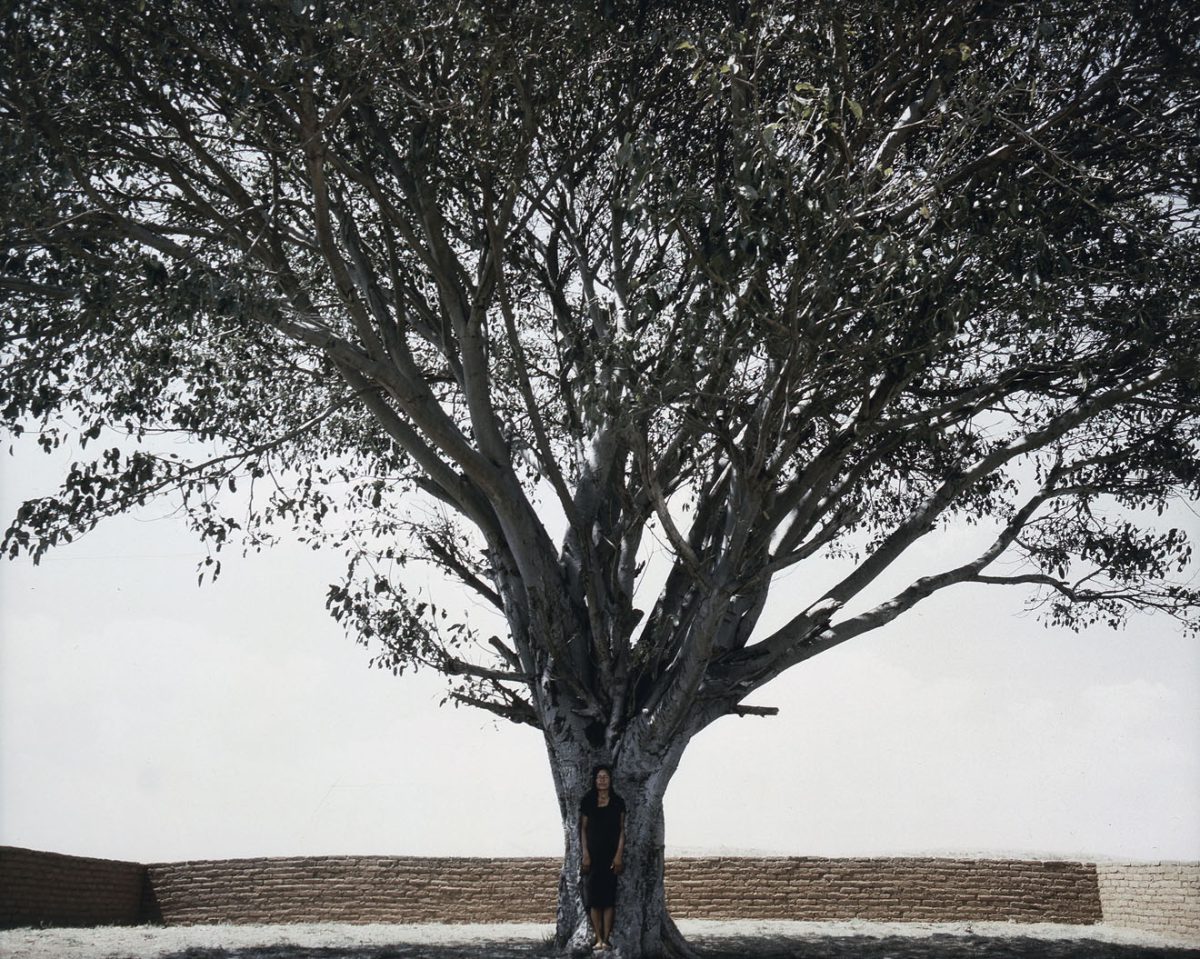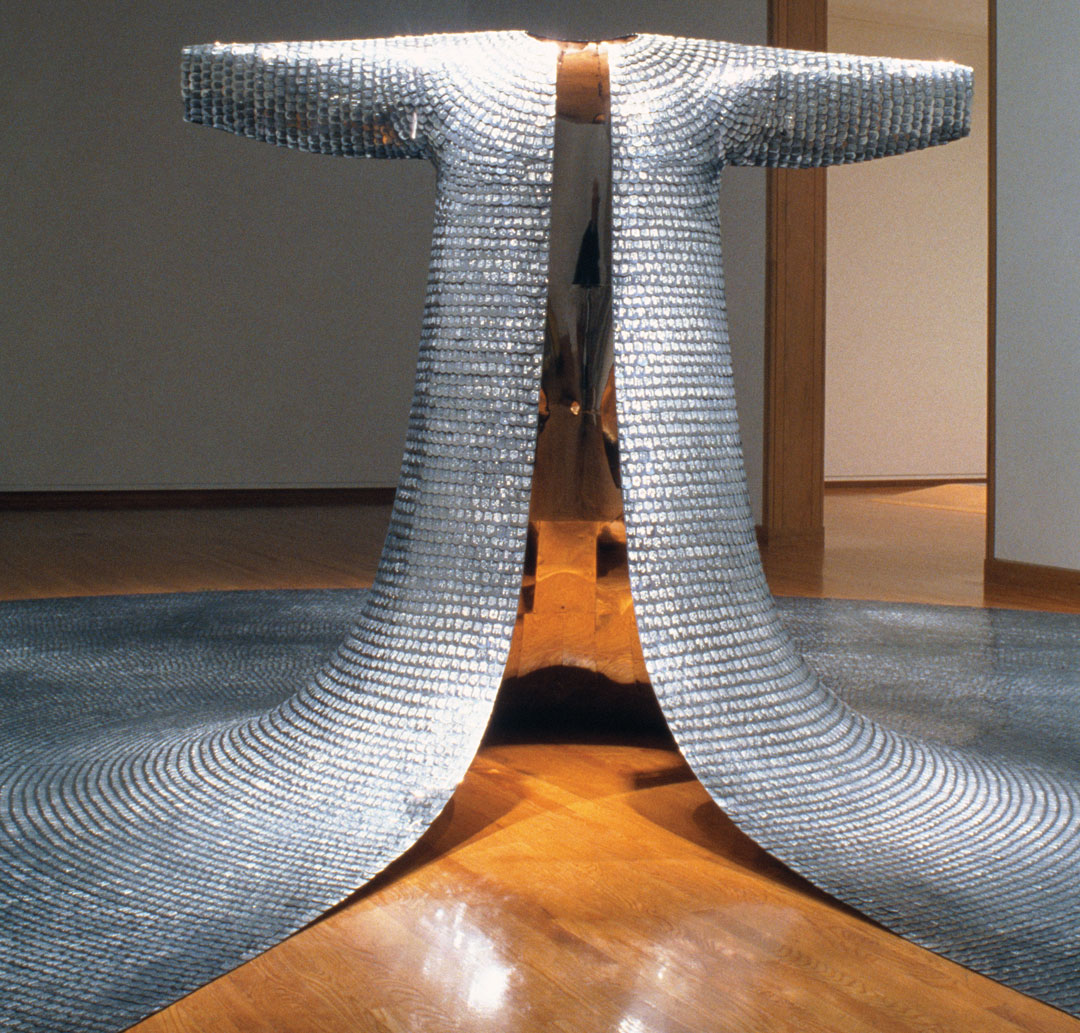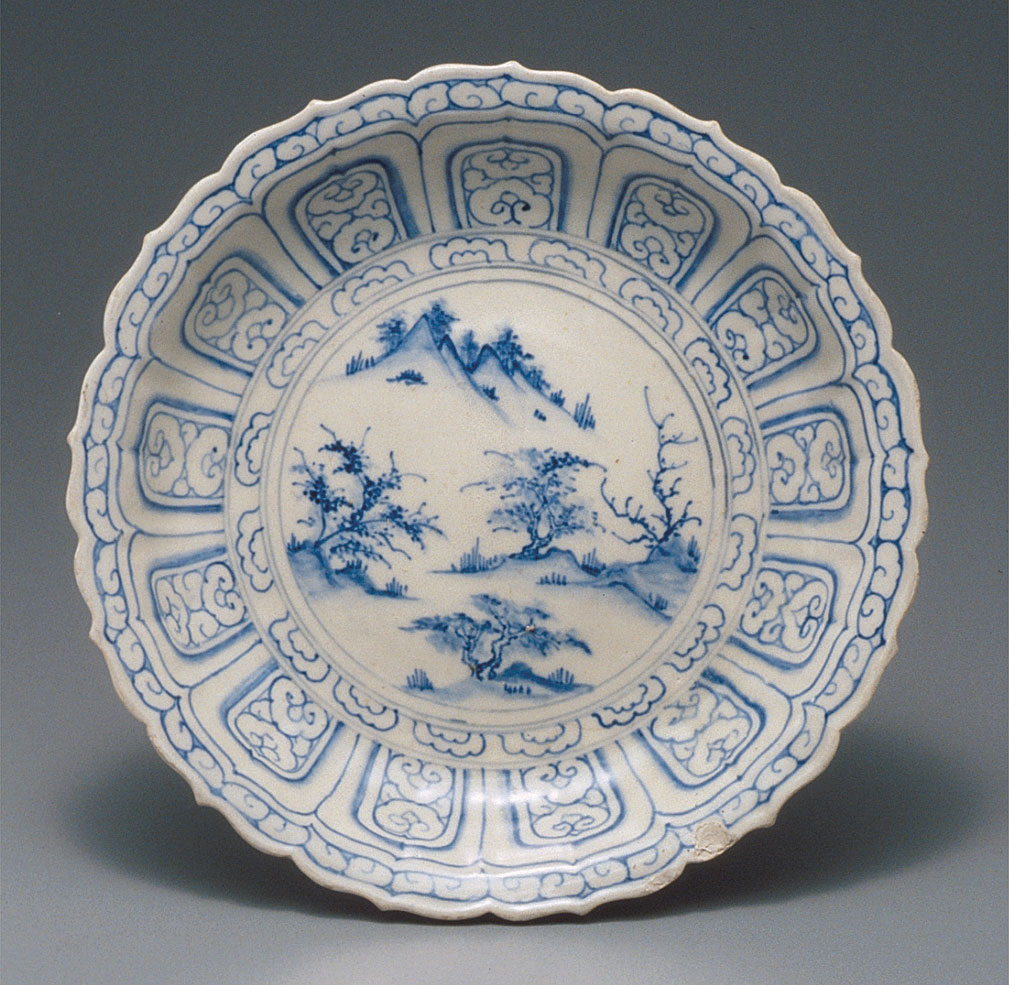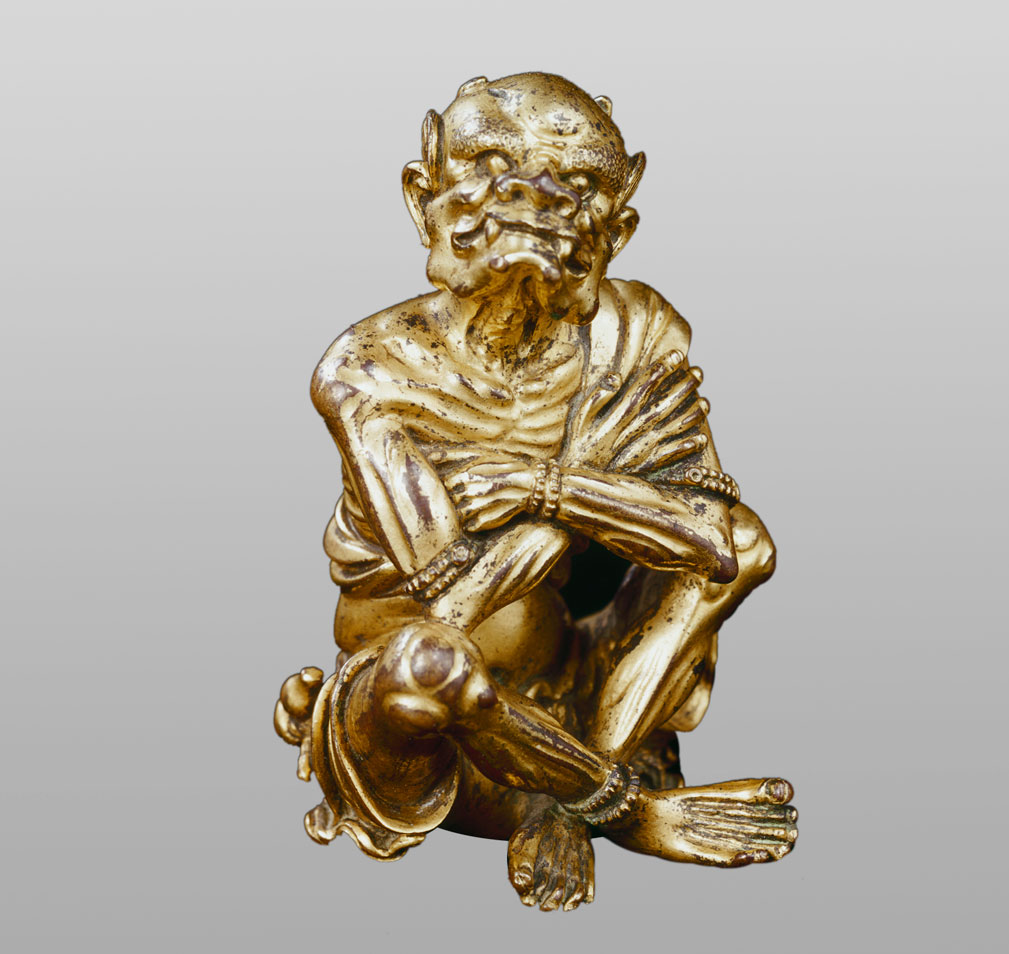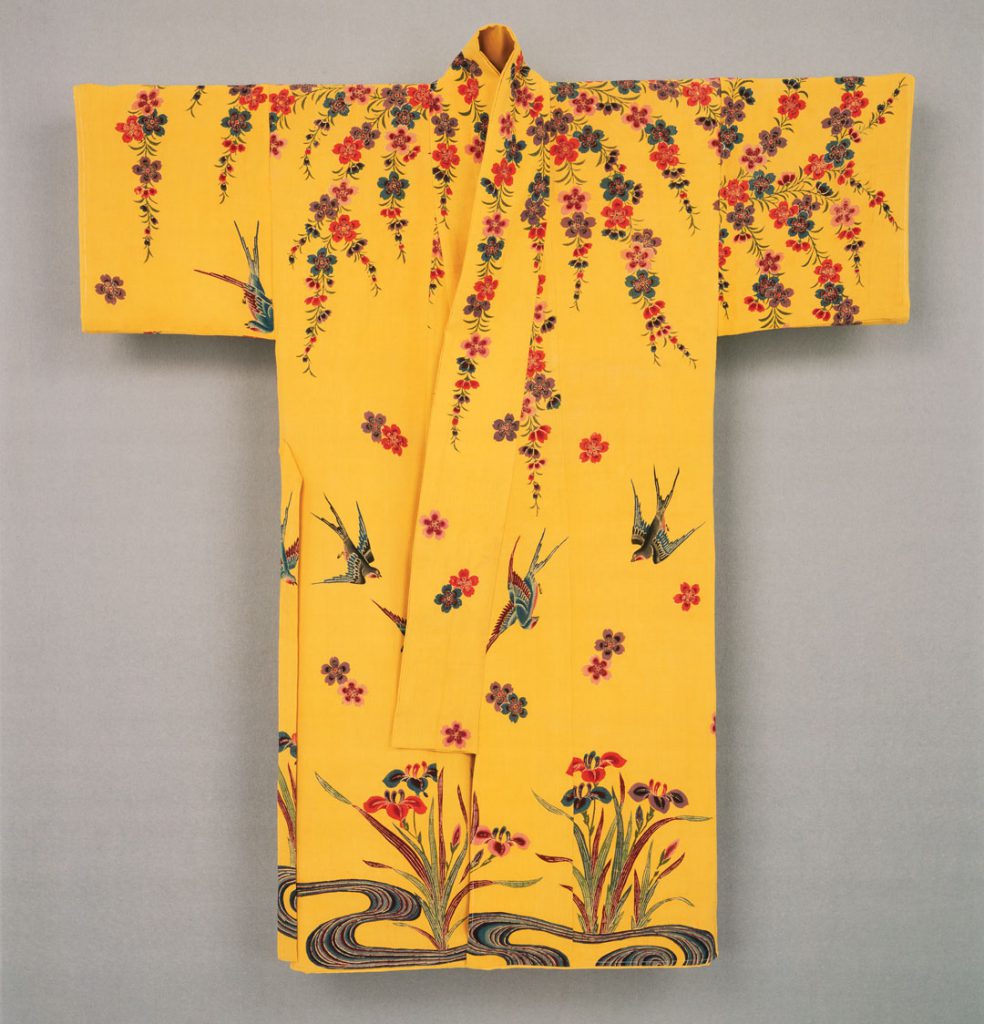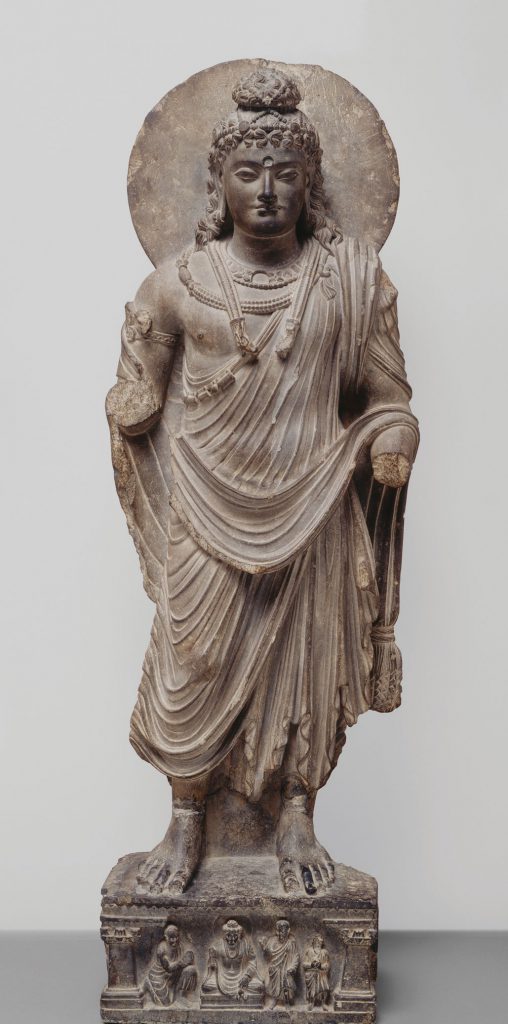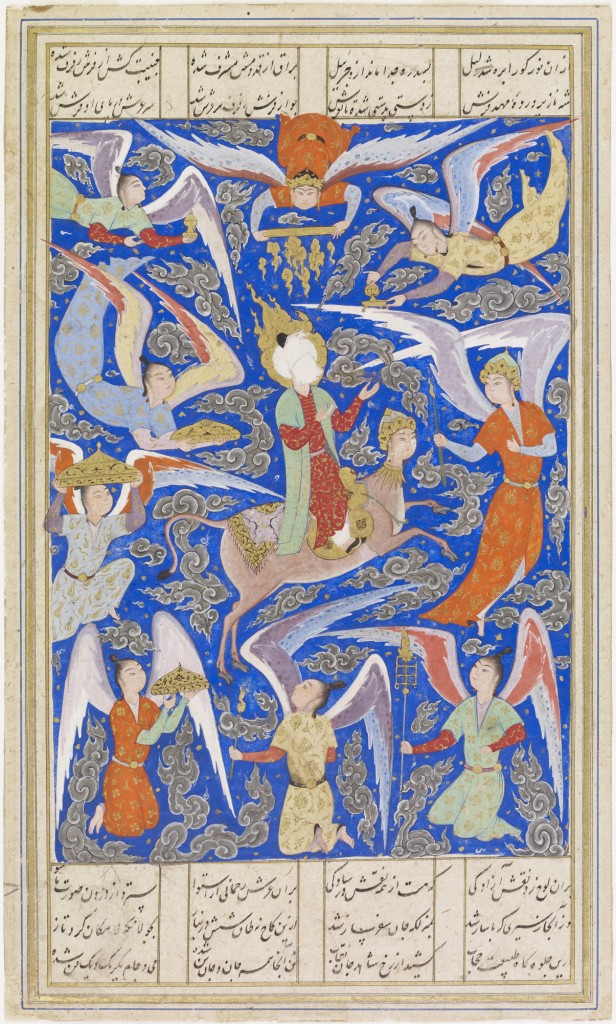“Woman, Life, Freedom”: Shirin Neshat’s Tooba
Tooba (2002) is a 12-minute video installation by Iranian-born artist Shirin Neshat. Projected on two opposing screens, it centers around the image of a woman inside a tree, within a walled garden in the midst of a desert landscape. The woman disappears into the tree as a crowd of men approach, in what appears to be a kind of pilgrimage. As with much of her work, Neshat uses the grammar of traditional narrative filmmaking (her cinematographer Darius Khondji regularly works with Hollywood filmmakers like David Fincher and the Safdie brothers) to tell an allegorical story with poetic open-endedness. The combination gives Tooba the spiritual yet earthly feeling that is present in much of her work.
Originally, Neshat intended to film in Iran. In a making-of documentary she said, “we made many steps toward it… and then it was blocked [for] whatever reason.” The “whatever reason” is most likely the Islamic Republic, the theocratic regime that has governed Iran for the past 43 years. Any film, performance, or otherwise public artwork made in the country has to be vetted by its Ministry of Culture, which must be convinced that the work isn’t critical of the regime or its particular brand of politicized Islam.
It’s not hard to imagine why Shirin Neshat, whose work has repeatedly dealt with the gender apartheid inside Iran, would have a hard time getting a stamp of approval from the Ministry of Culture. The video itself is based on a novel of the same name by Iranian author Shahrnush Parsipur, who spent years as a political prisoner inside Iran. Parsipur now lives in exile, as does Neshat.
Brought into SAM’s collection in 2015, Tooba was on view in Be/longing: Contemporary Asian Art at the Seattle Asian Art Museum until July 2022, which is about when I started my position as a SAM photographer. One aspect of my job is to walk the galleries and take photos of museum visitors looking at the art. As an Iranian-American, I get a thrill noticing people examining Iranian artifacts in the museum’s collection because there are so few instances in the US where Iranian and Middle Eastern culture are visible.
I wonder what goes through people’s minds when they see “Iran” written on wall labels and how they reconcile that name with the typical images of “Iran” from our media: scowling men in foreign-looking religious or military garb, the leaders of the Islamic Republic. The Iran of today is cloaked behind those men and the opaque politics of nuclear negotiations.
That is until September 2022.
On September 13, Mahsa Jina Amini, a 22-year-old Kurdish Iranian woman, was detained for allegedly not complying with the regime’s compulsory hijab law—all women in the country must cover their hair and wear loose clothing that hides their bodies. She was reportedly beaten while in custody and died three days later. Amini’s death sparked a wave of country-wide civil disobedience, led by women who marched into the streets and defiantly refused to wear hair coverings. After eleven weeks of demonstrations, the movement shows no signs of slowing down. The number of women with free-flowing hair in public grows every day. To me, every one of them is an Iranian Rosa Parks daring to assert her own worth—often hand-in-hand with women who cover their hair but who fight in solidarity for the choice to do so.
This feminist revolution has also added a new wave of protest art to Iran’s history of guerilla art under the regime of the Islamic Republic. But the defining artistic work of this moment in Iran is probably the song Baraye, by Shervin Hajipour. A crowdsourced song whose title means “for the sake of,” Baraye has become the de facto anthem of hopeful revolutionaries in Iran. It is simply a list of what people are fighting for, taken verbatim from Iranian Twitter. The breadth of grievances—from the most basic (“for the shame of being penniless”), to the painfully specific (“for a girl who wished she was a boy”), to sweeping hopes (“for the future”)—demonstrate the intersectional alliance of Iranians fighting for change.
The song ends with the cornerstone chant of the movement: “woman, life, freedom.” Three words which when taken together, indicate that freedom for anyone is impossible without freedom for women. And so, if Iranians are successful, we may be witnessing what Shirin Neshat has called the “first female revolution” to overthrow a government.
Predictably 25-year-old Hajipour was arrested, forced to publicly renounce the obvious intentions of his song, and delete it from his Instagram page. But that’s hardly a drop in the bucket of the regime’s violent crackdown on the protests. To date 450 people have been reported killed (including 63 children); over 18,000 people have been arrested and threatened with execution; at least 21 have been formally charged with the death penalty (up to 1,000 face further charges); and a propaganda machine makes paranoia and fatigue a feature of daily life in Iran.
This is a government with no room for song (for women, literally).
And so Shirin Neshat ended up filming Tooba in Oaxaca, Mexico and kept the setting of the video nondescript. This gives her work a universality that it probably would have lacked had she filmed in Iran. Neshat’s adaptability as an artist aside, the decision on filming location should have been hers to make and not one she was backed into by a theocracy that has banned her from working in her homeland. As people outside of the country use their freedom to continue raising awareness over the long history of oppression in Iran, how many Shirin Neshats are inside the country right now—rather than making art, desperate to find a missing friend? How many Shahrnush Parsipurs will never make it out of political prison to write a book that would inspire the next Tooba? And how many more Shervin Hajipours will risk their lives to sing?
– Alborz Kamalizad, SAM Staff Photographer
Photos: Tooba (detail), 2002, Shirin Neshat (American, b. Iran, 1957), color 35mm film transferred to DVD, 12 min., Gift of Jeffery and Susan Brotman, Jane and David Davis, Barney A. Ebsworth, Jeff and Judy Greenstein, Lyn and Jerry Grinstein, Richard and Betty Hedreen, Janet Ketcham, Kerry and Linda Killinger Foundation, James and Christina Lockwood, Michael McCafferty, Christine and Assen Nicolov, Faye and Herman Sarkowsky, Jon and Marry Shirley, Rebecca and Alexander Stewart, Virgnia and Bagley Wright, Charles and Barbara Wright, and Ann P. Wyckoff in honor of Lisa Corrin, 2005.141 ©️ Shirin Neshat, photo: Larry Barns, courtesy of Gladstone Gallery. Installation image of the Islamic galleries at SAM, photo: Alborz Kamalizad. Iranian-Americans marched through Downtown Seattle on November 19, 2022 in solidarity with Iranians back home, photo: Alborz Kamalizad.
